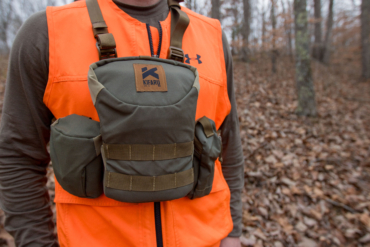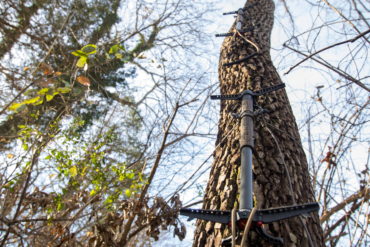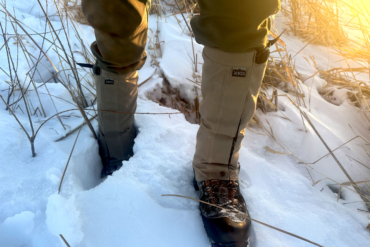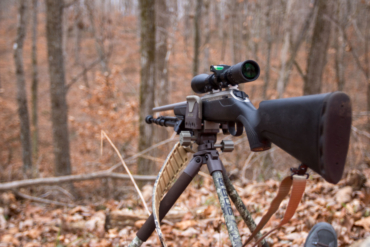The number of hunters is actually on the rise. And quality habitat is at the lowest it’s ever been. Competing ideas are at play in the hunting industry and community. Here’s more.
Over the past few years, the hunting community has jumped full sail into what it’s calling the R3 movement. “R3” stands for recruitment, retention, and reactivation of hunters. And it’s an effort to boost the number of hunters in myriad ways, mostly due to the idea that hunter numbers are in decline.
It’s an interesting idea, but it bears a closer look. While hunters are on the decline per capita, the actual number of hunters on the American landscape tells a different story.
And beyond that, habitat and biodiversity in the lower 48 are both well into declines that are not only alarming but also potentially devastating to both hunter opportunities and the variety of healthy American ecosystems in general.
There are three things I think we need to look at from a wholesale perspective.
The first is the consistent use of fear-based marketing tactics that tends to put the hunting community on the defense. The second is taking a look at hunter numbers from a broader perspective that shows us some good news about hunter numbers. And the third is aligning our educational focus to both help habitat and create public goodwill, as hunter numbers per capita are unlikely to increase at the rate of population growth.
Understanding these main issues is just the first step in correcting the narrative. What follows is a call to action: to educate, rather than try to recruit, our non-hunting friends. Because what hunting really needs is not more hunters, but more habitat.
‘The Decline of Hunting’: Scarier & Sexier Than Your Halloween Costume
Off the bat, I’d like to set the record straight: I’m all for new hunters coming into the fold. I’m in my seventh year of hunting, and other hunters have certainly helped me get here. I’ve hosted a women’s hunting camp, in part to help introduce novice hunters to the pastime. Personally, I’m not sure hunters can be created or recruited out of marketing efforts.
But I do think that a broad and general public who views hunting positively is the best deal we hunters could possibly create for ourselves. And the general, non-hunting public can make a powerful ally for land conservation. (More on this later.)

Over and over again, I’ve heard organizations and well-heeled influencers talking about how hunter numbers are in decline and that this is a mortal wound in the side of hunting culture that needs to be addressed.
There’s some truth here — albeit massaged truth — and I’ll get to that. But fear is the ultimate motivator, and whenever I sniff out fear in messaging, my inner skeptic sounds the alarm. Making fear sexy involves adding some sort of positive outcome or good intention; it gives worrying a purpose. The hunting community is deft in this regard.
A few examples of things I’ve heard in one form or another reflect this:
“There are fewer hunters than ever! If we recruit more hunters, then we’ll save conservation!”
“Hunters are in decline! We need more hunters or the system is going to fail us, and we’re gonna lose our hunting traditions!”
“If we don’t have enough hunters, we don’t have enough money to protect the things we love to hunt! More hunters, more money!”
This leads me to my first point: If you find yourself being motivated by fear or defensive tactics, think twice.
Fear is the most commonly used tactic in marketing because it works. And really, R3 is a giant marketing campaign for an effort that has no data to show it will substantially increase numbers in hunting.
I’d be remiss to not mention that a lot of this fear comes down to money. Hunters and anglers do contribute a lot of money to conservation, through a variety of sources, including hunting licenses, excises taxes, travel, buying power, and more. It’s certainly in the best interest of any membership-based organization, brand, or wildlife agency to generate more income.
It’s one thing to increase your bottom line — that’s all fine and good — but it’s another to massage numbers and messaging in certain ways to do it. So let’s look at the numbers in a different way.
Are Hunter Numbers Really Declining That Much?
One of the main points that come up in the conversation around hunting decline is hunter numbers per capita — not hunter numbers in total.
When we talk about what percent of hunters exist across the national population, it ain’t big. At less than 4% of the population, hunters are outnumbered. But that’s nothing new.
In 1958, the American population was about 175 million. Today, our population stands at nearly 333 million people. Around the same time, 54 million folks lived in rural areas. The rural population today is actually more than that, at 59 million folks.
Even with more people living in rural areas, the per capita percentage of rural America sharply declined as our urban population grew. And that’s also true of hunters per capita.
But the numbers of hunters actually haven’t diminished all that much, when we look at it more holistically.
In 1958, 14,138,182 people owned hunting licenses. In 2020, hunting license owners numbered 15,158,443 — over 1 million more. And we’re not all that far away from the peak number of 17 million hunters in 1982. And it’s worth noting these numbers wax and wane a few million over time.
Put another way for more context: In 1958, 8% of the population hunted. In 1982, with more hunters than ever before, there was still a per capita decline, at 7%. And in 2020, 4.5% of the population hunted.
Yes, that’s a decline per capita. But it’s not, in my opinion, a damning one.
The Real Decline: Habitat Loss

Habitat loss comes in three types: destruction, fragmentation, and degradation. And America has all three in spades.
The grasslands of the American Plains stand as some of the most imperiled in the nation. Serious fragmentation and monocultural agriculture practices are harming flora and fauna at alarming rates. Since colonization, American grasslands have declined by nearly 60%.
Wetlands and waterways are also in serious trouble. Since the 1950s, we’ve lost nearly 17 million acres of wetlands.
To top it off, a recent study from the Ecological Society of America showed that imperiled species in the U.S. are most affected by habitat loss on private lands. And private lands make up 60% of the U.S. landmass. Thankfully, the U.S. has a more robust system of public lands than the majority of countries, but this is not a catch-all for habitat, especially with most of the public land centered in the American West.
With habitat increasingly fragmented, plowed under for massive cornfields, or simply paved over with concrete, we’re seeing massive losses in the numbers of birds, insects, plant life, and suitable habitat for all wildlife across the lower 48 in particular.
Not only does decreased habitat mean fewer opportunities to hunt, but it also means fewer species overall. Take the northern bobwhite quail, for example. A combo of habitat fragmentation and timber managed for economic rather than ecological bounty are two huge reasons why we’ve seen an 85% decrease in the bird’s population since 1966.
But it doesn’t have to be this way. We can manage timber for both birds and the economy, and we can help increase hunting opportunities in the process.
Groups like Quail Forever focus almost entirely on habitat restoration and give folks the tools they need to create habitat on their own. The National Wildlife Federation has a Certified Wildlife Habitat program that allows individuals to certify their backyard gardens as quality habitats for all sorts of critters.
And hunting- and angling-driven conservation groups like Ducks Unlimited, Trout Unlimited, Pheasants Forever & Quail Forever, and the Rocky Mountain Elk Foundation incorporate increased habitat reclamation, protection, and enhancement as top priorities in their conservation efforts.
As a result of these efforts, millions of acres of habitat have been restored. As many conservationists say, “What’s good for the bird is good for the herd.” It’s all interconnected.
But there’s a helluva lot more to do here.
Under Pressure: Decreased Opportunity, Increased Demand
If you’ve ever thought to yourself, “Wow! My favorite hunting spot is getting hammered. Guess it’s not my favorite spot anymore,” you’re not alone. The increase of hunters and the decrease of opportunity is a serious issue.
Here’s the meat of this oxtail: We have more hunters than we did in 1958, and we have lost large amounts of quality habitat to hunt. Habitat begets both plant life and wildlife. All these things feed off each other. This results in a lot of pressure being put on a massively reduced huntable landscape.
The issue of the 3.5% per capita loss in hunters in the overall population isn’t reflective of a dying tradition; it’s reflective of a growing and more urbanized population with less exposure to hunting.
This leaves a potential rift in a democratic society. If the majority isn’t for hunting, the minority loses out on their traditions. We saw it happen in British Columbia with the banned grizzly hunt. It can certainly happen here if hunters don’t act in their own best interests.
So, What Do We Do?

If any hunter wants to do all hunters a favor, we need to be great ambassadors for hunting culture. Not to bring people in, but to better their assumptions about who hunters are.
We need to lead on educating and incentivizing private landowners on ways to help the wildlife and plant life they interact with daily. We need to castigate and throw out the damaging image of “trophy hunting.” And we need to feed our non-hunting friends wild game, leave the door open if they want to join, and hopefully create an advocate either way.
But the biggest necessary overhaul is the need to shift our focus from the unsubstantiated fear propagated by the R3 movement and move toward engaging in greater and more nuanced public education, in conjunction with real physical work to restore habitats and ecosystems. Maybe even in our own backyard.
Here’s my call to action: Don’t convince someone to go on a turkey hunt with you. Instead, ask more people you know to help with a local habitat restoration project. Certify your garden or even your balcony. And if you don’t have private land, invest some time in a small tract of public land.
Then, tell folks about it. Toot your own horn. Bring non-hunters into the habitat-making fold.
If every hunter committed to bettering one acre of land in a year, more than 15 million acres could be restored. And, surprisingly, that’s 1 million more acres than would have been restored by hunters in 1958.







